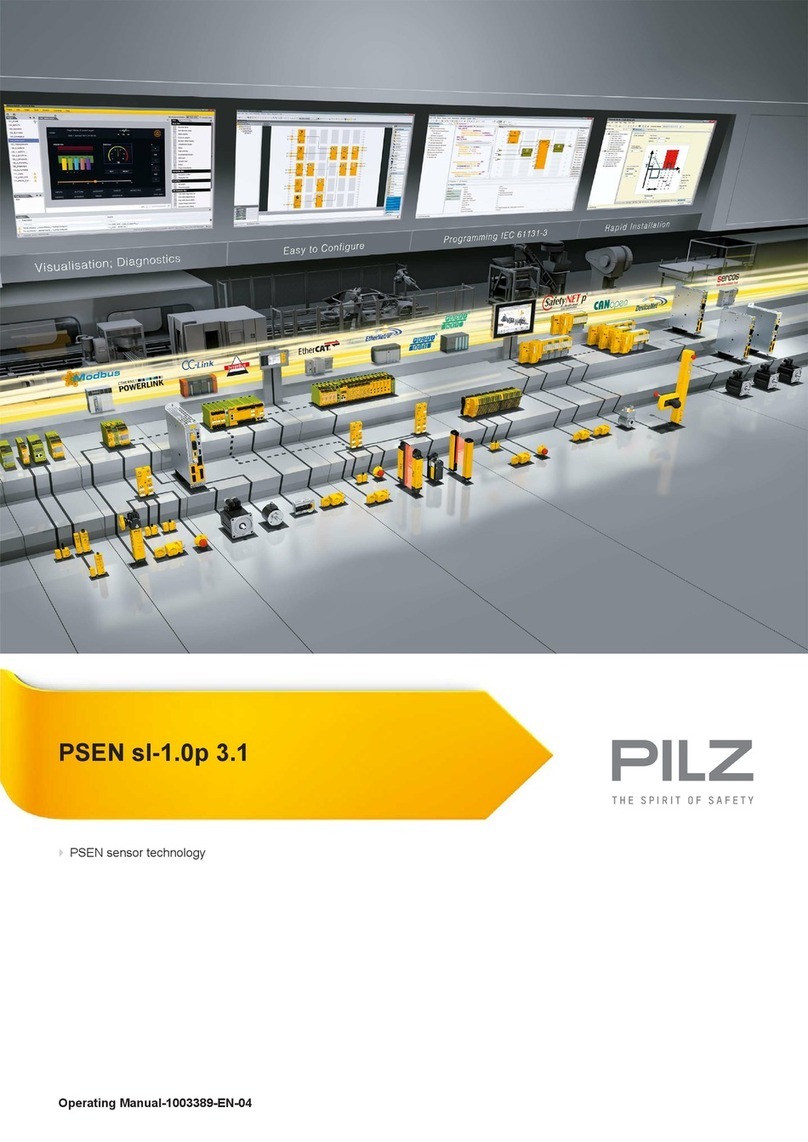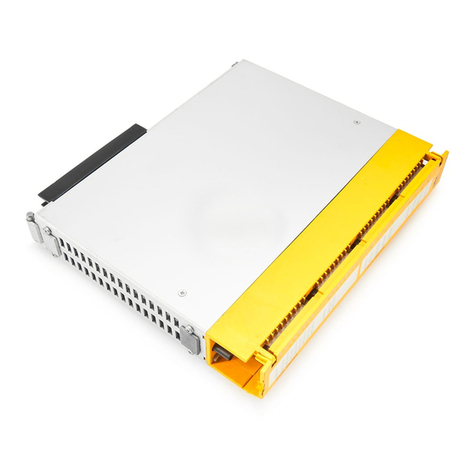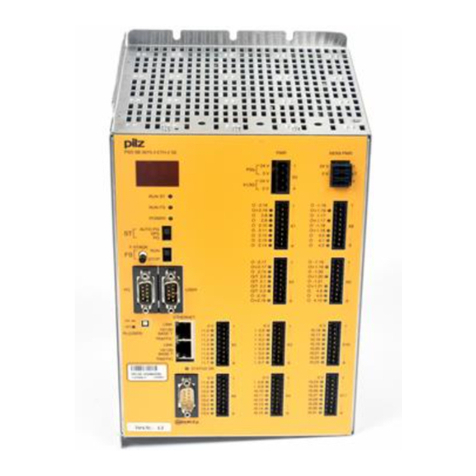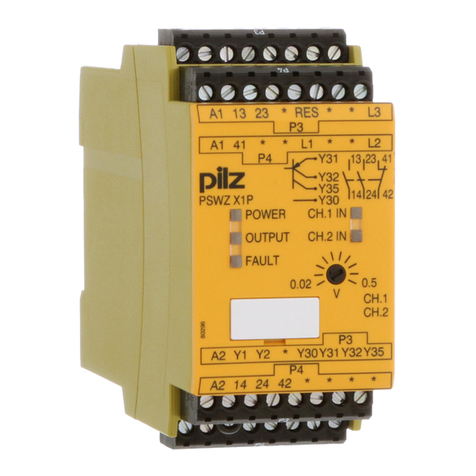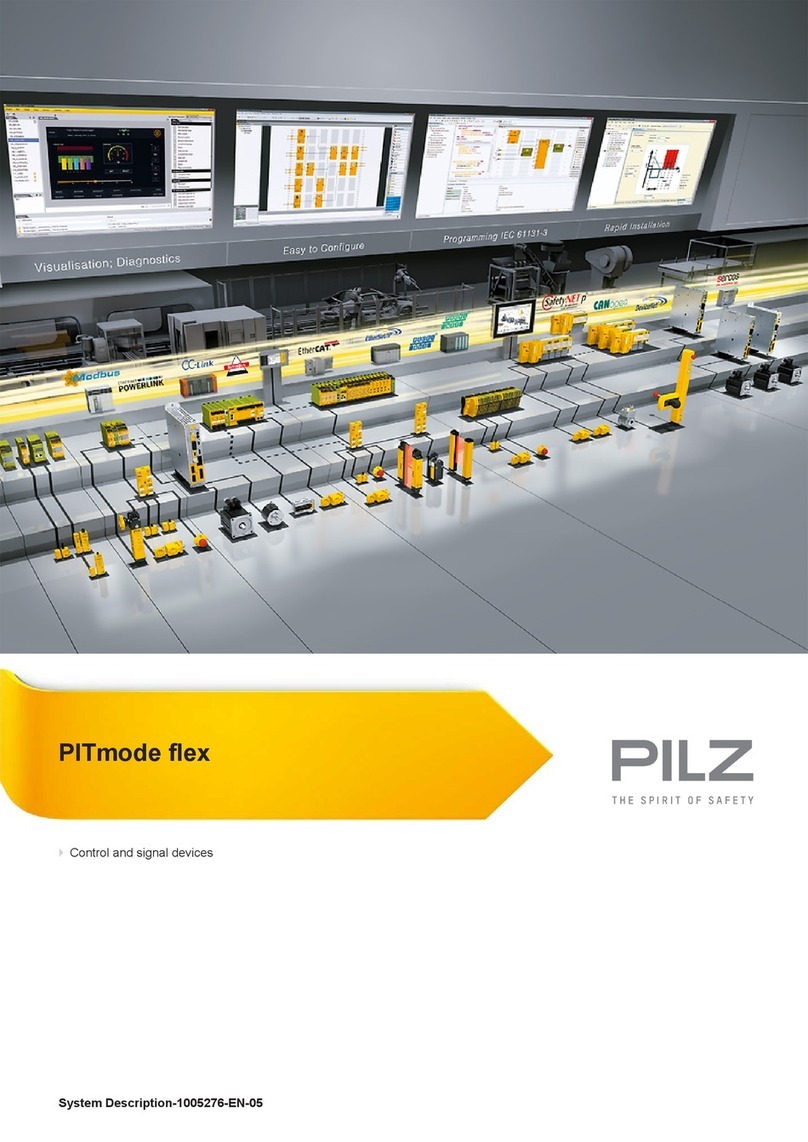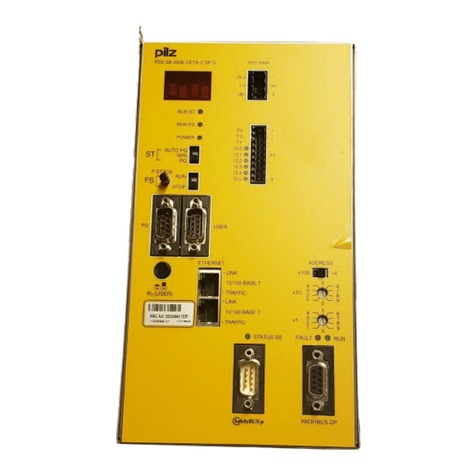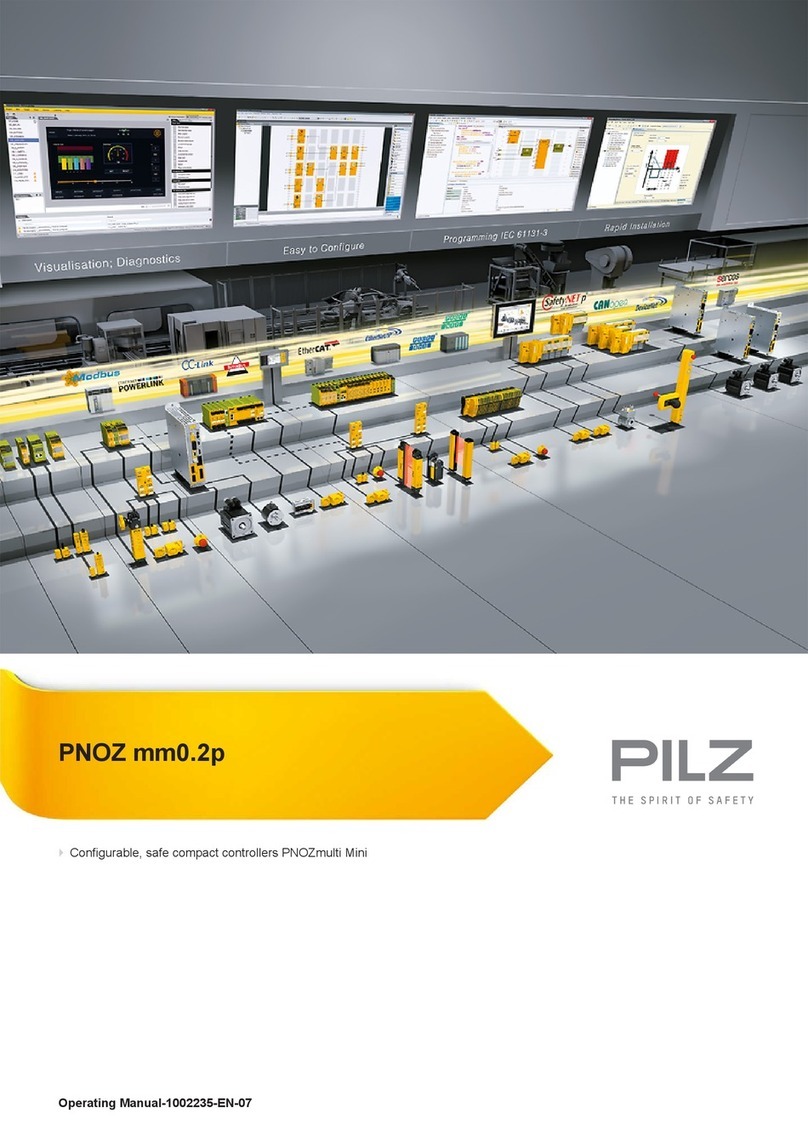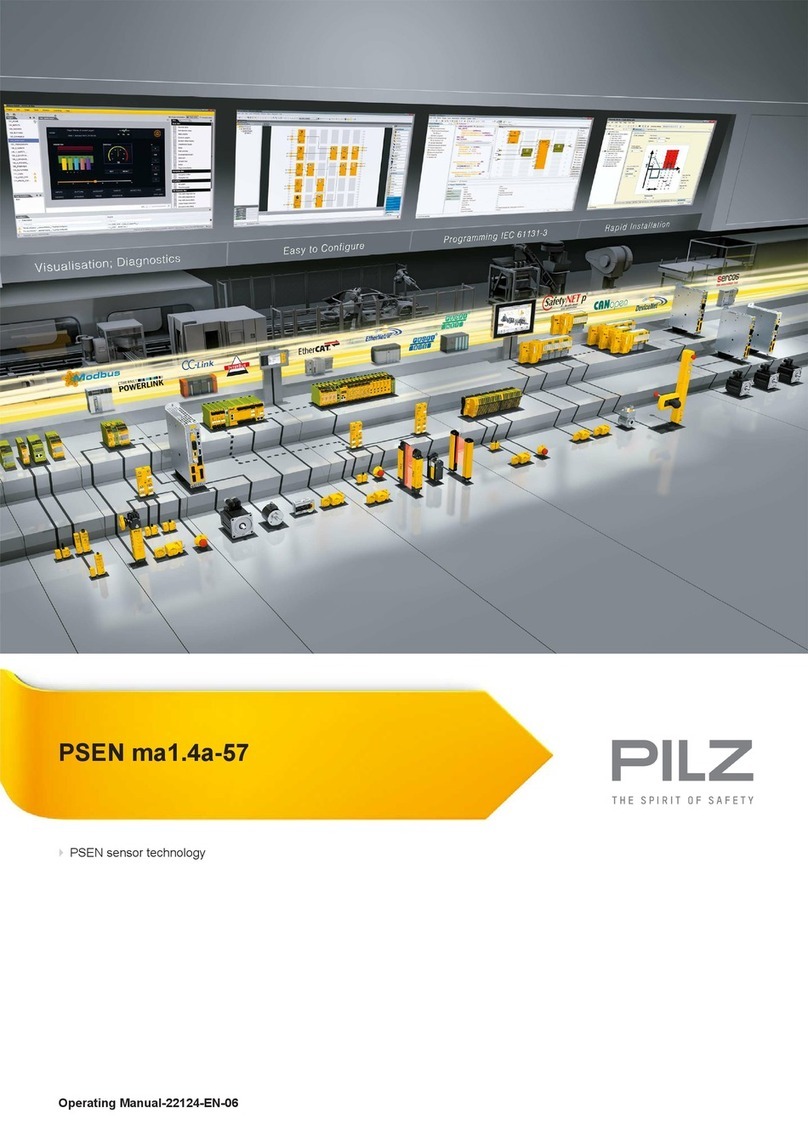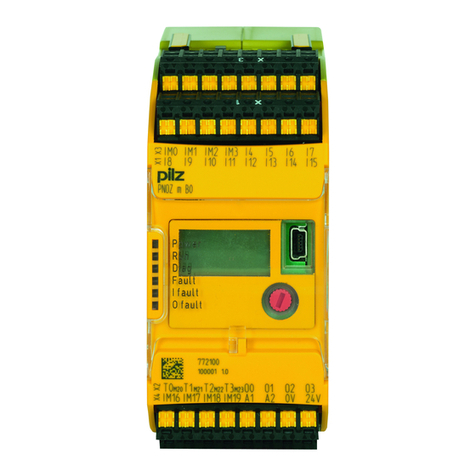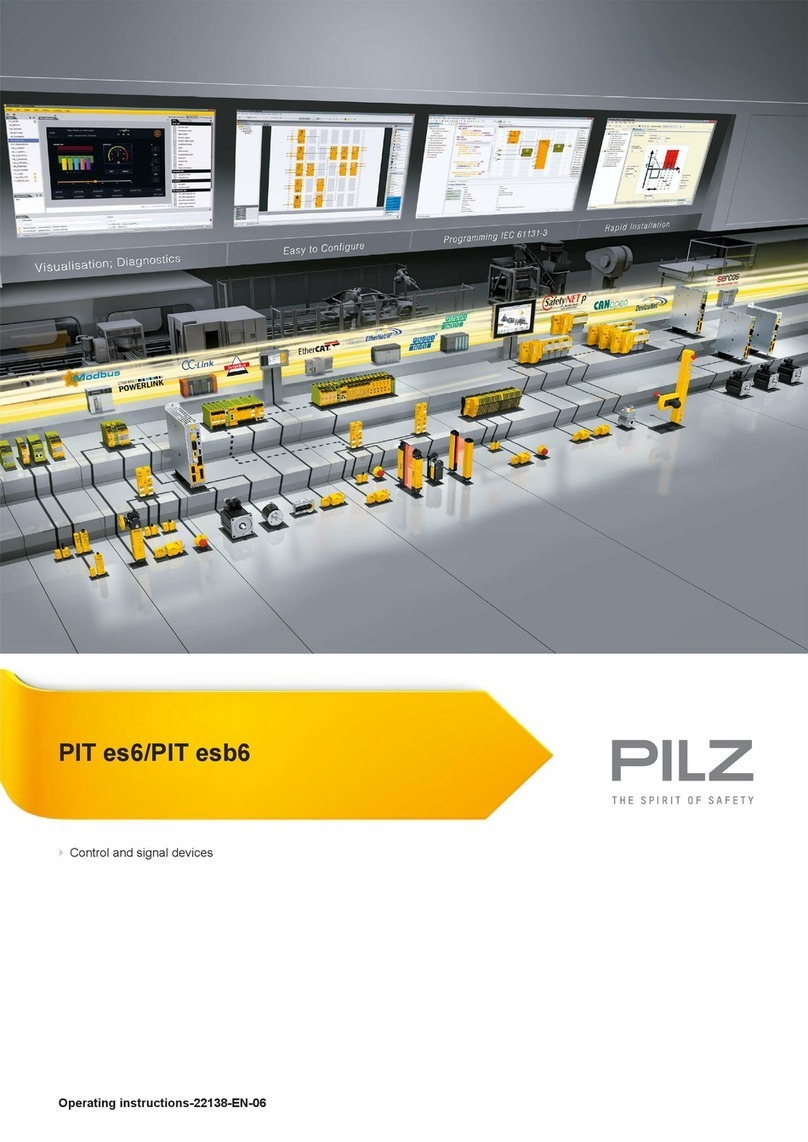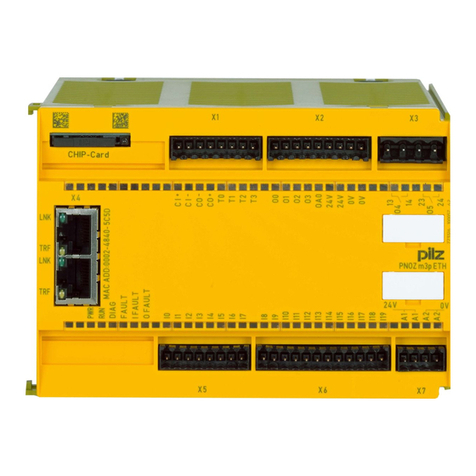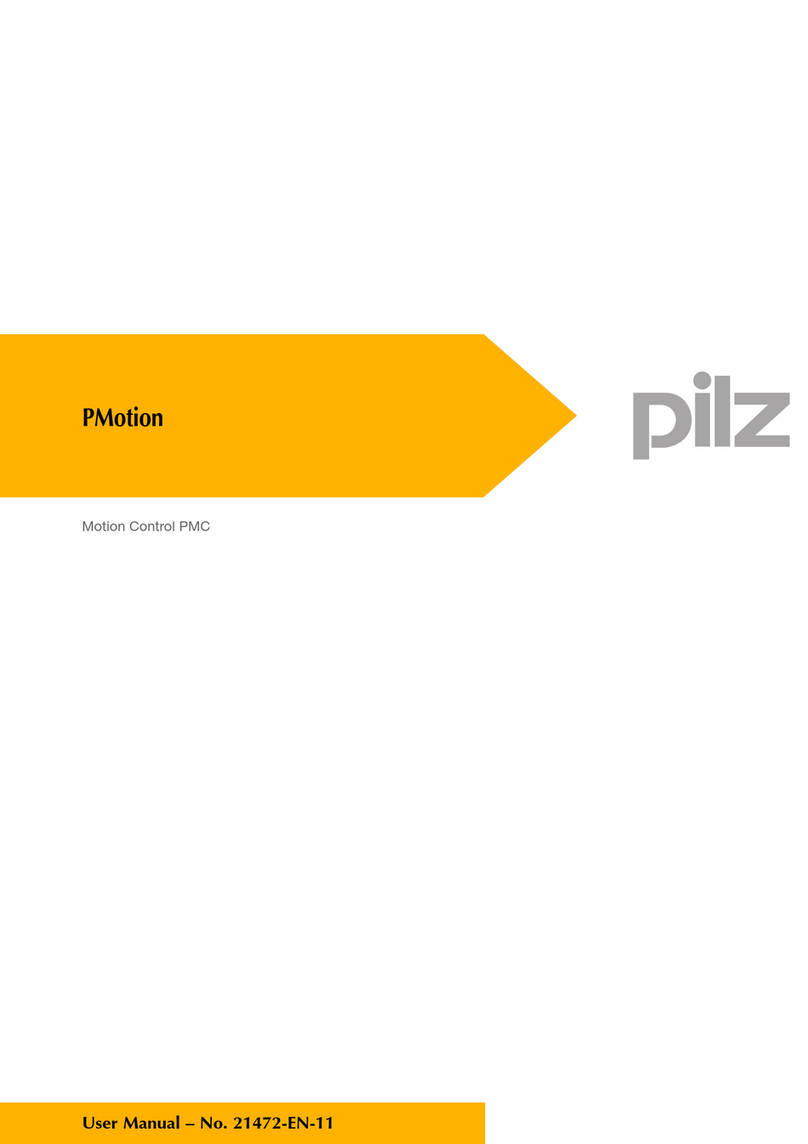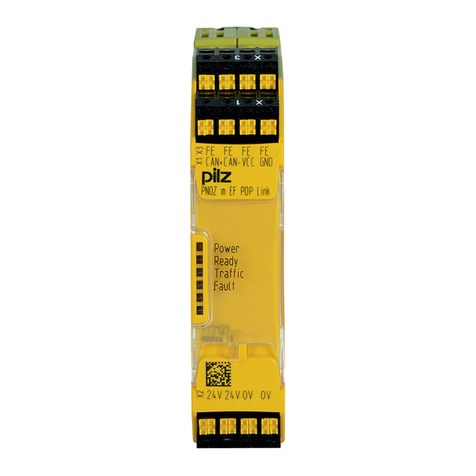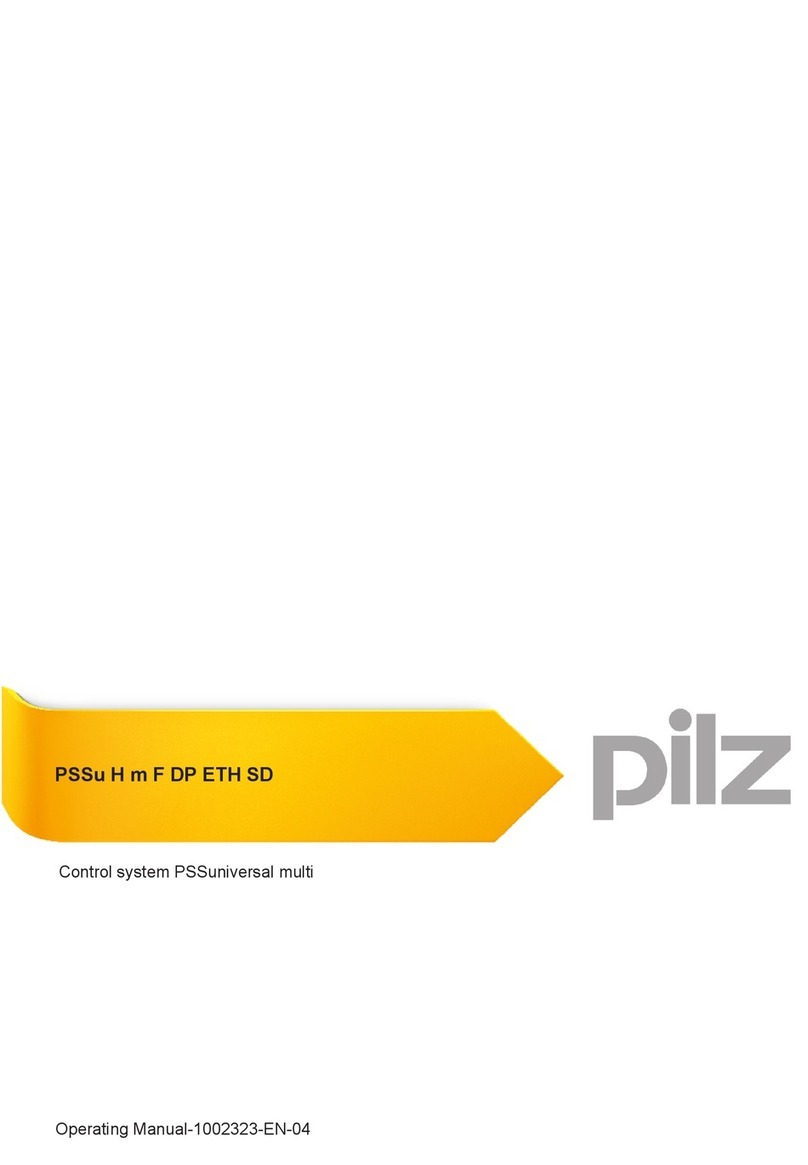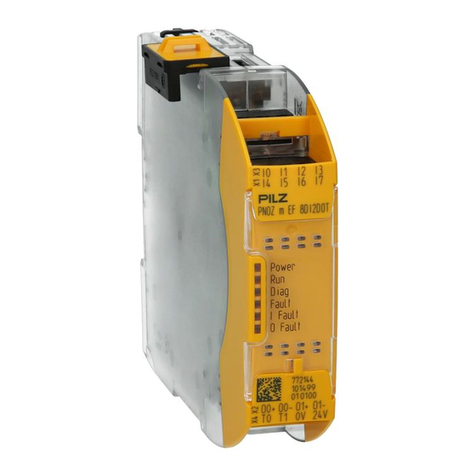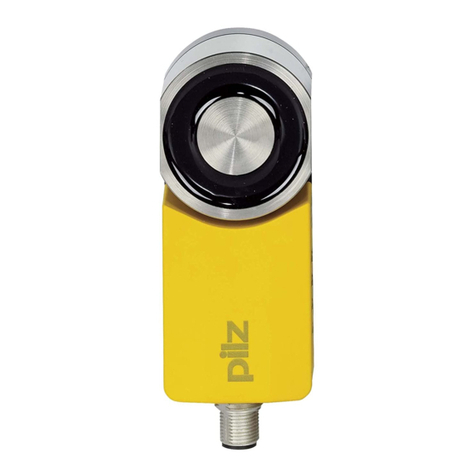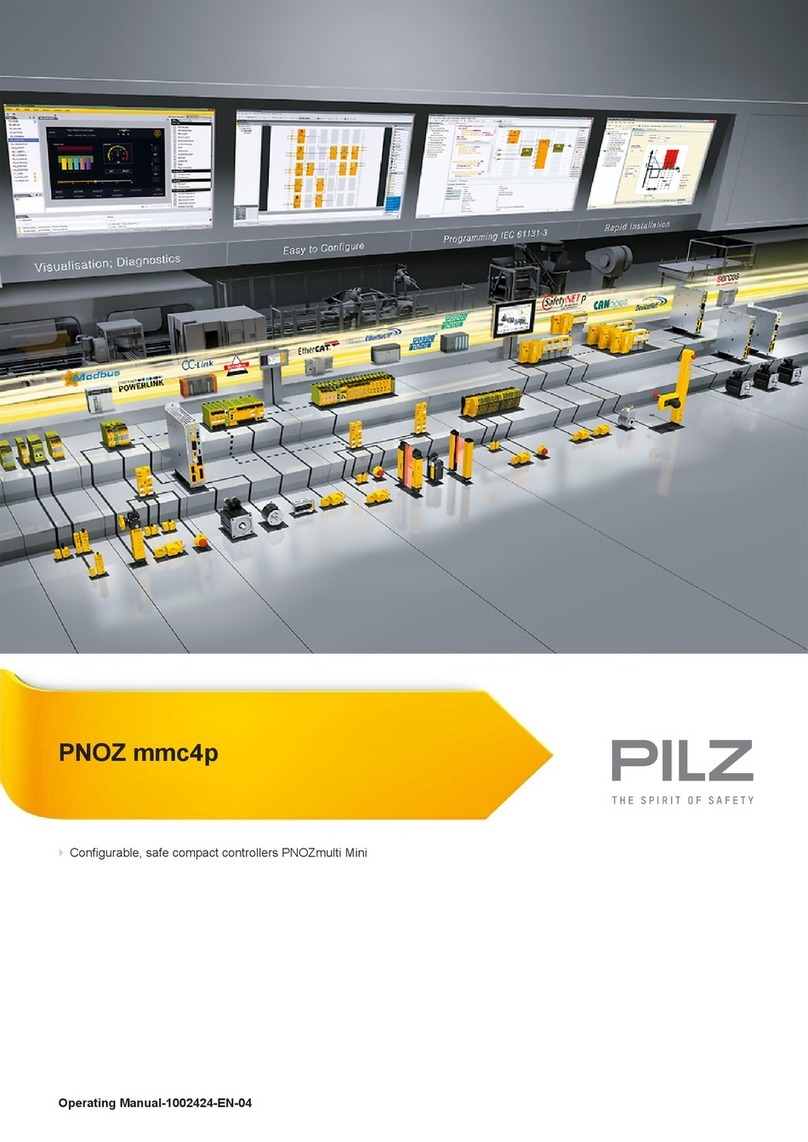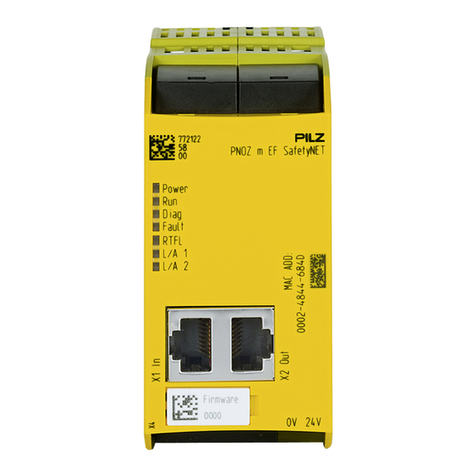
Contents
Operating Manual PNOZ m B1
1003790-EN-02 | 3
1 Introduction ............................................................................................................................5
1.1 Validity of documentation.......................................................................................................... 5
1.2 Using the documentation .......................................................................................................... 5
1.3 Definition of symbols................................................................................................................. 5
2 Overview .................................................................................................................................7
2.1 Range ....................................................................................................................................... 7
2.2 Unit features ............................................................................................................................. 7
2.3 USB memory ............................................................................................................................ 7
2.4 Front view ................................................................................................................................. 8
3 Safety ...................................................................................................................................... 9
3.1 Intended use ............................................................................................................................. 9
3.2 System requirements................................................................................................................ 10
3.3 Safety regulations ..................................................................................................................... 10
3.3.1 Safety assessment ................................................................................................................... 10
3.3.2 Use of qualified personnel ........................................................................................................ 10
3.3.3 Warranty and liability ................................................................................................................ 10
3.3.4 Disposal .................................................................................................................................... 10
3.3.5 For your safety.......................................................................................................................... 11
4 Function description ............................................................................................................. 12
4.1 Integrated protection mechanisms............................................................................................ 12
4.2 Functions .................................................................................................................................. 12
4.3 System reaction time ................................................................................................................ 12
4.4 Detection of shorts across contacts.......................................................................................... 13
4.5 Block diagram ........................................................................................................................... 14
4.6 Diagnostics ............................................................................................................................... 14
4.7 Ethernet interface ..................................................................................................................... 14
5 Installation ..............................................................................................................................15
5.1 Control cabinet installation........................................................................................................ 15
5.1.1 Mounting distances................................................................................................................... 15
5.2 Dimensions in mm .................................................................................................................... 17
5.3 Connecting the base unit and expansion modules ................................................................... 17
6 Commissioning ......................................................................................................................19
6.1 General wiring guidelines ......................................................................................................... 19
6.2 Connection................................................................................................................................ 19
6.3 Ethernet interfaces.................................................................................................................... 20
6.3.1 RJ45 interfaces ("Ethernet") ..................................................................................................... 20
6.3.2 Requirements of the connection cable and connector.............................................................. 20
6.3.3 Interface configuration .............................................................................................................. 20
6.3.4 RJ45 connection cable ............................................................................................................. 21
6.4 Use USB memory ..................................................................................................................... 22
6.5 Load project from PNOZmulti Configurator .............................................................................. 22
6.6 Activate project via the display on the base unit....................................................................... 23
6.7 Display settings......................................................................................................................... 23
